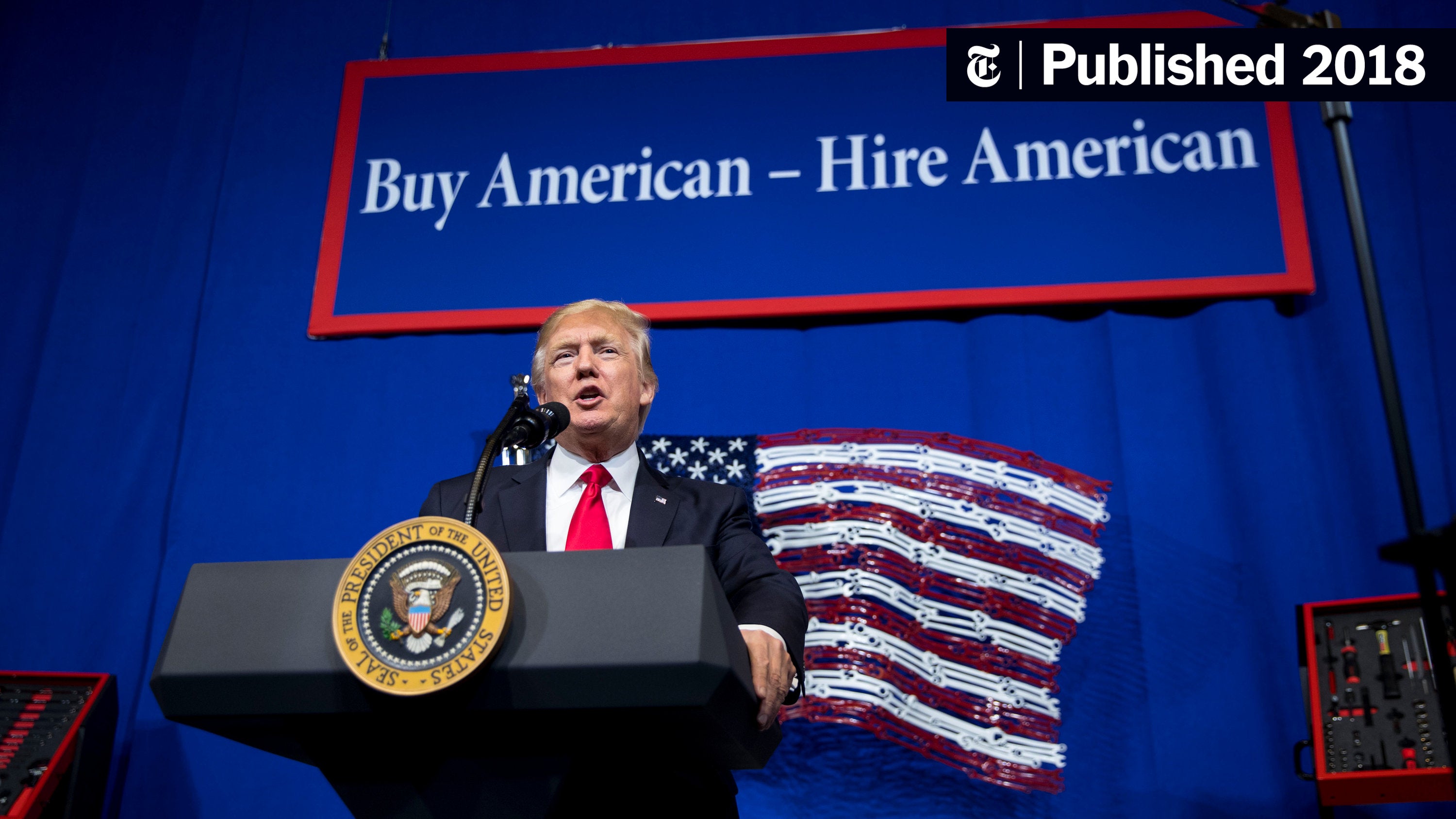Analysis Of Trump's 100% Tariff Plan For Foreign Films

Table of Contents
Economic Consequences of a 100% Tariff on Foreign Films
A 100% tariff on foreign films would undoubtedly have far-reaching economic consequences, impacting various stakeholders across the film industry and beyond.
Impact on US Box Office Revenue
Initially, a 100% tariff might appear to boost the US box office.
- Increased market share for American films: With foreign competition significantly reduced due to higher prices, domestically produced films could capture a larger share of the market.
- Potential job creation in the US film industry: Increased demand for American films could lead to more jobs in production, distribution, and exhibition.
- Higher ticket prices for consumers: The reduced supply of foreign films could potentially drive up ticket prices for consumers.
However, this rosy picture is incomplete. The elimination of foreign film distribution and exhibition in the US would represent a substantial loss of revenue. Furthermore, the potential for retaliatory tariffs from other countries could severely impact the export revenue of American film companies.
Effects on International Trade Relations
A protectionist policy like a 100% tariff on foreign films would almost certainly damage international trade relations.
- Damage to US-foreign relations: Such a move would likely be met with retaliatory tariffs on American films in other countries, escalating a trade war.
- Potential boycotts of American films: Foreign audiences might respond by boycotting American films in protest of the protectionist policy.
- Loss of export revenue for American film companies: Retaliatory tariffs and boycotts would significantly reduce the revenue generated by American films sold internationally. This could disproportionately impact smaller, independent film companies who rely heavily on international distribution.
Consumer Impact
The impact on consumers would be significant, extending beyond simply the choice of films available.
- Reduced variety of films: A 100% tariff would drastically limit consumer access to diverse cinematic experiences from around the world.
- Higher ticket prices: Reduced competition could lead to inflated ticket prices for the remaining films.
- Potential for a decrease in overall moviegoing: Higher prices and a reduced selection could discourage moviegoers, negatively impacting the overall health of the film industry.
Cultural Implications of a 100% Tariff on Foreign Films
Beyond the economic impacts, the proposed tariff poses significant cultural risks.
Impact on Cultural Diversity
The most immediate impact would be a reduction in cultural diversity.
- Limited access to international films: The tariff would effectively create a barrier to accessing films reflecting diverse cultures, storytelling styles, and perspectives.
- Homogenization of film culture: A lack of exposure to international cinema would contribute to a more homogenous film landscape, potentially limiting creativity and innovation.
- Loss of opportunities to learn about different cultures: Foreign films offer invaluable windows into other cultures and societies, enriching our understanding of the world. Limiting access to them would be a significant cultural loss.
Artistic Censorship Concerns
While not explicitly censorship, the tariff acts as a de facto filter, limiting the range of artistic voices and perspectives.
- Reduced representation of foreign viewpoints: The tariff would inherently favor films from the US, silencing the voices and stories of filmmakers from other countries.
- Potential for bias in film selection: The selection of films available would likely reflect a specific, potentially biased, set of viewpoints.
- The chilling effect on international collaborations: Fear of retaliation could discourage future international film collaborations, stunting artistic growth and innovation.
The Role of Foreign Film in US Film Culture
Foreign cinema has profoundly influenced American filmmaking.
- Influence on American directors, actors, and techniques: American filmmakers have long drawn inspiration from foreign cinematic styles and techniques.
- Exposure to different genres and styles: Foreign films have exposed American audiences to diverse genres and narrative styles, broadening the landscape of American cinema.
- The enrichment of American cinematic language: The exchange of ideas and techniques between American and foreign filmmakers has enriched the American cinematic language, resulting in a richer and more diverse cinematic tradition.
Alternative Policy Approaches to Supporting the US Film Industry
Instead of protectionist measures, the US could adopt alternative policies to support its film industry.
Tax Incentives and Subsidies
Government support doesn't require trade barriers.
- Targeted tax breaks for film production: Offering tax incentives for film production within the US would encourage domestic filmmaking without harming international relations.
- Investment in film schools and training programs: Investing in education and training would ensure a skilled workforce for the US film industry.
- Support for independent filmmakers: Government funding and grants could support independent filmmakers, fostering creativity and innovation.
Promotion of American Films Abroad
Rather than restricting foreign films, the focus could shift to promoting American films internationally.
- International film festivals: Participating in and promoting American films at international film festivals can increase global visibility.
- Partnerships with foreign distributors: Collaborating with foreign distributors could expand the reach of American films to international markets.
- Targeted marketing campaigns: Investing in targeted marketing campaigns in key international markets would increase the global appeal of American films.
Conclusion: Re-evaluating Trump's 100% Tariff on Foreign Films
The proposed 100% tariff on foreign films presents a complex issue with significant economic and cultural implications. While proponents might argue for a short-term boost to the domestic film industry, the potential negative consequences – decreased cultural diversity, damaged international relations, and harm to consumers – far outweigh any perceived benefits. Alternative approaches, such as tax incentives and strategic marketing initiatives, provide more sustainable and less damaging ways to support the US film industry. Further research into the impact of the proposed Trump 100% tariff on foreign films is crucial for informed policymaking. Understanding the economic consequences of a 100% tariff on foreign films is vital for ensuring a thriving and diverse cinematic landscape, both domestically and globally. We encourage further reading on topics like trade policy and the economics of the film industry to fully grasp the complexities involved.

Featured Posts
-
 The Wall Street Journal Pro Publica And Reuters Claim Pulitzer Wins
May 07, 2025
The Wall Street Journal Pro Publica And Reuters Claim Pulitzer Wins
May 07, 2025 -
 Ozhidanie Zaversheno 7 Sezon Chernogo Zerkala Vykhodit 13 Marta 2025
May 07, 2025
Ozhidanie Zaversheno 7 Sezon Chernogo Zerkala Vykhodit 13 Marta 2025
May 07, 2025 -
 Steelers Draft Strategy Identifying George Pickens Replacement At The Combine
May 07, 2025
Steelers Draft Strategy Identifying George Pickens Replacement At The Combine
May 07, 2025 -
 Xrp Recovery Delayed The Role Of Derivatives Trading
May 07, 2025
Xrp Recovery Delayed The Role Of Derivatives Trading
May 07, 2025 -
 Mhrjan Lwkarnw Ykrm Jaky Shan Bjayzt Alinjaz Mda Alhyat
May 07, 2025
Mhrjan Lwkarnw Ykrm Jaky Shan Bjayzt Alinjaz Mda Alhyat
May 07, 2025
